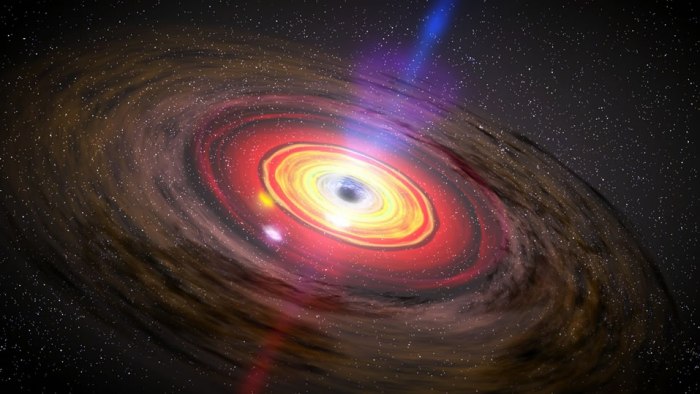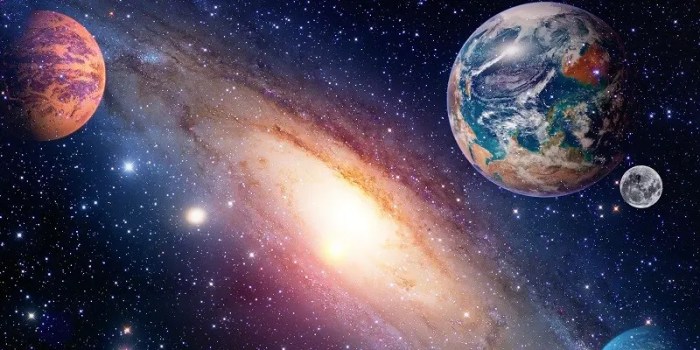Journey into the captivating realm of the Big Bang Theory, where the origins of our universe unfold before our eyes. Dive into the “Big Bang Webquest Answer Key” to uncover the scientific evidence, trace the evolution of the cosmos, and explore the ongoing debates surrounding this groundbreaking theory.
From the Cosmic Microwave Background Radiation to the formation of galaxies and stars, this guide unravels the complexities of the Big Bang, providing a comprehensive understanding of our cosmic roots.
Definition and Overview

The Big Bang Theory is the prevailing cosmological model for the universe from the earliest known periods through its present expansion and cooling. It is based on the observation that the universe is expanding and cooling, and that the cosmic microwave background radiation is extraordinarily uniform across the sky.
The Big Bang Theory states that the universe began about 13.8 billion years ago with a very hot, dense state. This state was so hot and dense that it was impossible for atoms to form. Instead, the universe was filled with a soup of subatomic particles, including protons, neutrons, and electrons.
Timeline of Significant Events in the Big Bang Theory
The Big Bang Theory predicts a timeline of significant events in the history of the universe. These events include:
- The Big Bang: The universe begins as a very hot, dense state.
- The Inflationary Epoch: The universe expands rapidly, causing the universe to cool and become less dense.
- The Formation of Atoms: Protons and neutrons combine to form atoms.
- The Formation of Stars and Galaxies: Atoms clump together to form stars and galaxies.
- The Present Day: The universe continues to expand and cool.
Evidence for the Big Bang
The Big Bang theory is the leading scientific theory for how the universe began. It proposes that the universe originated from a very hot, dense state about 13.8 billion years ago. This theory is supported by a variety of evidence, including the Cosmic Microwave Background Radiation (CMB), the abundance of light elements, and the redshift of galaxies.
Cosmic Microwave Background Radiation (CMB)
The CMB is a faint glow of radiation that permeates the entire universe. It is the leftover radiation from the Big Bang, when the universe was very hot and dense. The CMB is a very strong piece of evidence for the Big Bang because it is consistent with the predictions of the theory.
Abundance of Light Elements, Big bang webquest answer key
The abundance of light elements, such as hydrogen and helium, is also consistent with the Big Bang theory. These elements were created in the first few minutes after the Big Bang, and their abundance is predicted by the theory.
Redshift of Galaxies
The redshift of galaxies is another piece of evidence for the Big Bang. The redshift of a galaxy is the amount by which its light is shifted towards the red end of the spectrum. This redshift is caused by the expansion of the universe.
As the universe expands, the galaxies move away from us, and their light is redshifted.
The redshift of galaxies is consistent with the Big Bang theory. The theory predicts that the universe is expanding, and this expansion is causing the galaxies to move away from us. The observed redshift of galaxies is consistent with this prediction.
Structure and Evolution of the Universe

The universe has evolved significantly since its inception with the Big Bang. Over billions of years, it has undergone various stages of expansion, cooling, and formation.
Stages of the Universe’s Evolution
The evolution of the universe can be divided into several major stages:
- Big Bang:The universe began as a singularity, a point of infinite density and temperature. It then rapidly expanded, creating the initial conditions for the formation of matter and energy.
- Inflation:In the first fraction of a second after the Big Bang, the universe experienced an exponential expansion, inflating by a factor of at least 10 30.
- Hadron Era:As the universe cooled, quarks and gluons combined to form hadrons, such as protons and neutrons.
- Lepton Era:The universe continued to cool, allowing electrons and positrons to form. These particles eventually annihilated each other, releasing energy in the form of photons.
- Nucleosynthesis:Protons and neutrons combined to form light elements, such as hydrogen, helium, and lithium.
- Dark Ages:The universe was filled with a thick fog of neutral hydrogen atoms, blocking the light from distant objects.
- Reionization:The first stars and galaxies formed, emitting ultraviolet radiation that ionized the hydrogen atoms, making the universe transparent to light.
- Current Era:The universe continues to expand and evolve, with the formation of new stars and galaxies.
Formation of Galaxies and Stars
Galaxies are vast collections of stars, gas, and dust held together by gravity. They formed from the collapse of primordial gas clouds in the early universe.
The Big Bang Webquest Answer Key provides comprehensive answers to the questions posed in the webquest. If you’re looking for further information, you may find the document sb 1343 spanish employee v5 helpful. This document covers various aspects of Spanish employment law and could provide valuable insights.
Returning to the Big Bang Webquest Answer Key, it serves as an excellent resource for students and teachers alike, offering detailed explanations and supporting evidence.
Stars are formed within galaxies from the gravitational collapse of gas clouds. As the cloud collapses, it heats up and begins to emit light.
Role of Dark Matter and Dark Energy
Dark matter and dark energy are two mysterious components of the universe that make up most of its mass and energy.
Dark matter is a hypothetical form of matter that does not interact with light or other electromagnetic radiation. It is believed to account for about 27% of the universe’s mass.
Dark energy is a hypothetical form of energy that is causing the expansion of the universe to accelerate. It is believed to account for about 68% of the universe’s energy.
Challenges and Controversies: Big Bang Webquest Answer Key
The Big Bang Theory is widely accepted as the most plausible explanation for the origin and evolution of the universe. However, it has not been without its challenges and controversies. Alternative theories and ongoing research continue to shape our understanding of the cosmos.
Alternative Theories
- Steady State Theory:This theory proposed that the universe is continuously expanding, with new matter being created to replace the matter that is lost. It has since been disproved by observations of the cosmic microwave background radiation.
- Cyclic Universe Theory:This theory suggests that the universe undergoes a cycle of expansion and contraction, with each cycle ending in a Big Crunch followed by another Big Bang. It is still a speculative theory that requires further evidence.
- Plasma Cosmology Theory:This theory posits that the universe originated from a plasma state rather than a singularity. It challenges the notion of an initial singularity and the inflationary epoch.
Ongoing Research and Debate
Despite its success, the Big Bang Theory still has some unresolved questions and areas of ongoing research:
- The nature of dark matter and dark energy:These mysterious components make up most of the universe’s energy and matter, but their properties and interactions are still poorly understood.
- The origin of the universe’s asymmetry:The universe contains more matter than antimatter, and the reason for this asymmetry is still unknown.
- The ultimate fate of the universe:Whether the universe will continue to expand forever or eventually collapse back in on itself is a question that is still being debated.
Implications of the Big Bang Theory
The Big Bang Theory has profound implications for our understanding of the universe:
- It provides a timeline for the universe’s history:The theory estimates the age of the universe to be around 13.8 billion years.
- It explains the origin of the elements:The theory suggests that the light elements (such as hydrogen and helium) were formed during the Big Bang, while heavier elements were formed later in stars.
- It suggests that the universe is constantly expanding:Observations of distant galaxies show that they are moving away from us, supporting the theory’s prediction of an expanding universe.
Detailed FAQs
What is the Big Bang Theory?
The Big Bang Theory is a scientific model that describes the origin and evolution of the universe from an incredibly hot and dense state.
What is the evidence for the Big Bang?
Evidence supporting the Big Bang includes the Cosmic Microwave Background Radiation, the abundance of light elements, and the redshift of galaxies.
What are the challenges to the Big Bang Theory?
While widely accepted, the Big Bang Theory faces challenges such as explaining the origin of dark matter and dark energy.